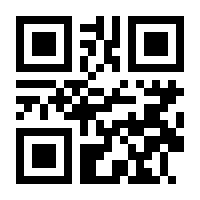Hubungan Intensitas Penggunaan Media Sosial WhatsApp dengan Academic Flow
(Studi Korelasi pada Siswa SMA Darul Fatwa Tahun Ajaran 2023/2024)
Abstract
This study aims to determine the relationship between the intensity of WhatsApp social media use and academic flow in Darul Fatwa High School students in the 2023/2024 school year. The quantitative method of correlational type was used in this study, with a population of 120 students and a sample of 92 students obtained through proportionate stratified random sampling technique. The normality test results show that the significance value on the academic flow variable is 0.200 and the intensity of whatsApp social media use variable is 0.190 which indicates that both variables have normally distributed data. The results of hypothesis testing show a correlation coefficient value of -0.172 with a significance value of 0.100, this value indicates that there is no relationship between variables X and Y.
References
Aini, N. Q., Ilfiandra, & Saripah, I. (2019). Aspek-Aspek Flow Akademik. Journal of Innovative Counseling : Theory, Practice & Research, 3(2), 43–51. http://journal.umtas.ac.id/index.php/innovative_counseling
Azwar, S. (2020). Penyusunan Skala Psikologi (2nd ed.). Pustaka Pelajar.
Bakker, A. B. (2005). Flow among music teachers and their students: The crossover of peak experiences. Journal of Vocational Behavior, 66(1), 26–44. https://doi.org/10.1016/j.jvb.2003.11.001
Creswell, J. W., & Creswell, J. D. (2023). Research Design Qualitative, Quantitative, and Mixed Methods Approaches (Sixth Edition). SAGE Publishing.
Gatari, A. (2020). Hubungan Stres Akademik dengan Flow Akademik pada Mahasiswa (Vol. 8, Issue 1). http://ejournal.umm.ac.id/index.php/cognicia
Irmayanti. (2022). Hubungan Flow Akademik dengan Prokrastinasi Akademik Pada Siswa MAN 4 Aceh Besar [Skripsi]. Universitas Islam Negeri Ar-Raniry.
Jannaty, Z. N. (2023). Pengaruh Tingkat Prokrastinasi Akademik dan Kecanduan Smartphone Terhadap Prestasi Akademik pada Mahasiswa Aktif Program Studi Farmasi Universitas Lampung Pasca Pandemi Covid-19. Universitas Lampung.
Junawan, H., & Laugu, N. (2020). Eksistensi Media Sosial,Youtube, Instagram dan Whatsapp Ditengah Pandemi Covid-19 Dikalangan Masyarakat Virtual Indonesia. Baitul Ulum: Jurnal Ilmu Perpustakaan Dan Informasi, 4(1). https://databooks.com
Nair, A. (2024). WhatsApp Statistics for 2024 – All You Need to Know. Verloop.Io. https://verloop.io/blog/whatsapp-statistics-2024/
Pearce, J. M., & Howard, S. (2004). Designing for Flow in a Complex Activity.
Putri, N. R. , Efandi, S. , Khairunisa, D. , Rahman, A. , & Wahyuni, R. (2023). Melacak Keberhasilan dan Tantangan dalam Mencapai Flow Akademik: Sebuah Tinjauan Komprehensif. Behavioral Science Journal, 1(2). https://jurnal.syedzasaintika.ac.id
Rizqiah, N. (2023). Hubungan Antara Intensitas Penggunaan Media Sosial WhatsApp dengan Tingkat Stres pada Mahasiswa di Kabupaten Jombang [Tesis]. Universitas Darul Ulum.
Rozalia, M. F. (2017). HUBUNGAN INTENSITAS PEMANFAATAN GADGET DENGAN PRESTASI BELAJAR SISWA KELAS V SEKOLAH DASAR. Jurnal Pemikiran Dan Pengembangan SD, 5(2).
Sa’diyah, H., Khairussalam, & Hakim, A. R. (2022). Dampak Penggunaan Media Sosial Whatsapp terhadap Interaksi Sosial Masyarakat Desa Lok Batu Kabupaten Balangan The Impact of The Use of Whatsapp Social Media on Social Interaction of The Community of Lok Batu Village Balangan Regency. Entitas Sosiologi, 11(1).
Safari. (2018). Statistika untuk penelitian bahasa, bimbingan dan konseling, psikologi, hukum, agama, teknik, ekonomi, keperawatan, kedokteran, PAUD, dan pendidikan. Universitas Islam As-syafiiyah.
Safira, H., & Marimbun. (2023). Hubungan Intensitas Penggunaan Whatsapp terhadap Sikap Overthinking pada Siswa. JUANG: Jurnal Wahana Konseling, 6(2), 99–108.
Satira, D. (2020). Pengaruh ıntensıtas penggunaan medıa sosıal whatsapp terhadap komunıkası antarprıbadı dalam keluarga dı kampung waru desa wargasetra kecamatan tegalwaru kabupaten karawang. UIN Syarifhidayatullah.
Shernoff, D. J., Csikszentmihalyi, M., Schneider, B., & Shernoff, E. S. (2003). Student engagement in high school classrooms from the perspective of flow theory. In School Psychology Quarterly (Vol. 18, Issue 2, pp. 158–176). https://doi.org/10.1521/scpq.18.2.158.21860
Soetanto, L. D. (2019). Informasi Hoaks dalam Grup WhatsApp Keluarga (Studi Pemetaan Informasi Hoaks dalam Grup WhatsApp Keluarga di Kalangan Mahasiswa/i S1 Universitas Atma Jaya Yogyakarta [Skripsi]. Universitas Atma Jaya.
We Are Social. (2024). Digital 2024: Overview Report. Glob Digit Report (Internet).
Yusminanda, I. M. (2019). Distraksi pada Pekerja Daring Selama Berinteraksi dengan Internet. Jurnal Ilmu Komunikasi, 16(2), 175–190.
Zuliani, R., Luthfiyah, L., & Mustikawati, R. (2023). Dampak Media Sosial terhadap Prestasi Belajar pada Peserta Didik. MASALIQ, 3(5), 790–800. https://doi.org/10.58578/masaliq.v3i5.1376
Copyright (c) 2025 Nur Baitillah, Syari Fitrah Rayaginansih, Muthahharah Thahir

This work is licensed under a Creative Commons Attribution 4.0 International License.


